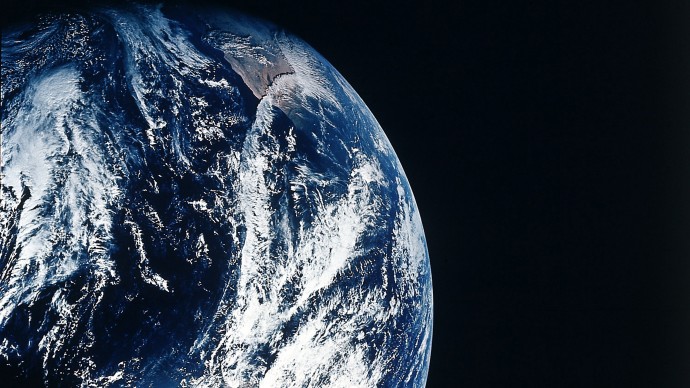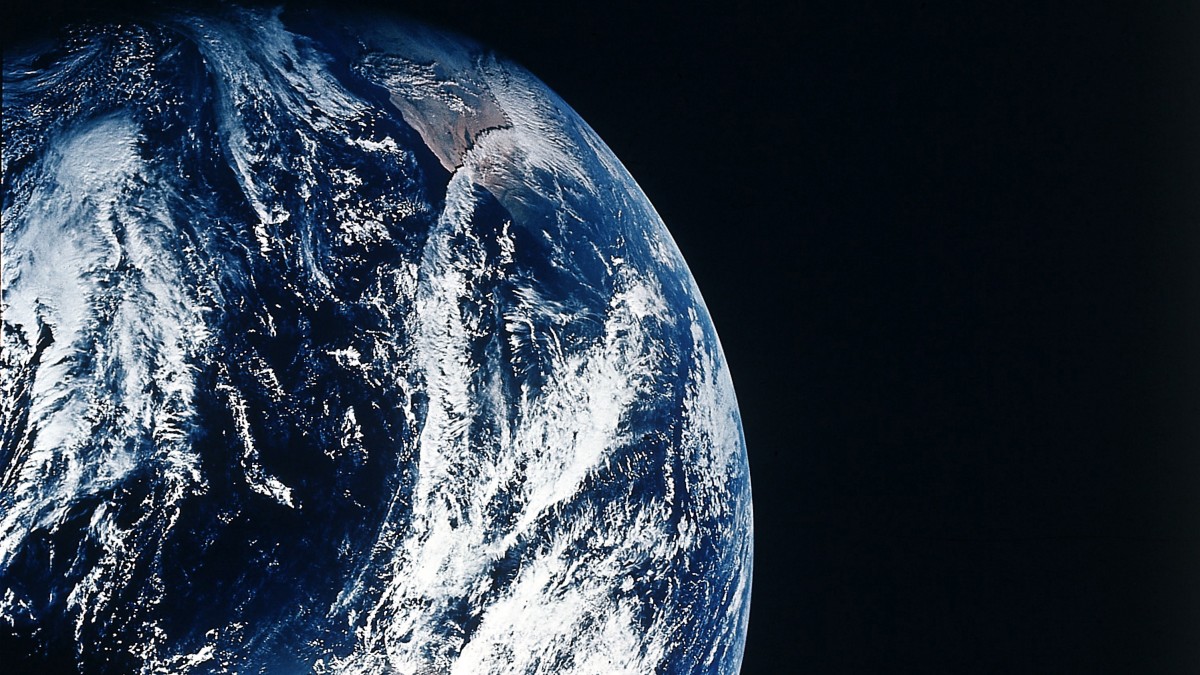
(MintPress) – In the ‘50s and ‘60s, the United States and the USSR engaged in a battle of wills toward proving which nation would have space superiority and therefore be proven the technologically superior nation. After early victories from the USSR (the deployment of Sputnik 1 and 2, the launch of the first living being into Earth’s orbit and the launch of the first satellite to orbit the Sun), the United States was both demoralized about the Soviet Union’s seeming dominance and fearful from the successful testing of the first intercontinental ballistic missile: the USSR’s R-7 Semyorka.
Upon the successful launch and recovery of Yuri Gagarin, the first human to travel into space, President John F. Kennedy asked his vice president, Lyndon Johnson, to do a full assessment of the American space program. Johnson recommended that the United States needed to do more to achieve leadership in space exploration and that a manned moon landing would be an achievable, suitable future goal for the United States to seek. On May 25, 1961, Kennedy addressed a special joint session of Congress and declared,
“I believe that this nation should commit itself to achieving the goal, before this decade is out, of landing a man on the moon and returning him safely to the earth. No single space project in this period will be more impressive to mankind, or more important for the long-range exploration of space; and none will be so difficult or expensive to accomplish. We propose to accelerate the development of the appropriate lunar space craft. We propose to develop alternate liquid and solid fuel boosters, much larger than any now being developed, until certain which is superior. We propose additional funds for other engine development and for unmanned explorations—explorations which are particularly important for one purpose which this nation will never overlook: the survival of the man who first makes this daring flight. But in a very real sense, it will not be one man going to the moon—if we make this judgment affirmatively, it will be an entire nation. For all of us must work to put him there.”
A year later, in defense of this bold shift in policy, Kennedy said this in an address at Rice University:
“There is no strife, no prejudice, no national conflict in outer space as yet. Its hazards are hostile to us all. Its conquest deserves the best of all mankind, and its opportunity for peaceful cooperation many never come again. But why, some say, the moon? Why choose this as our goal? And they may well ask why climb the highest mountain? Why, 35 years ago, fly the Atlantic? Why does Rice play Texas?
“We choose to go to the moon. We choose to go to the moon in this decade and do the other things, not because they are easy, but because they are hard, because that goal will serve to organize and measure the best of our energies and skills, because that challenge is one that we are willing to accept, one we are unwilling to postpone, and one which we intend to win, and the others, too.”
For millions of people worldwide, going to the moon was the crowning achievement of humanity. It represented man at his best; through his ingenuity, mastering the impossible. Young children who watched the moon landing dreamed of new worlds to discover, new technologies to create, new ways to beat old diseases and limitations. Technologies developed for the space race — such as velcro, teflon, satellite communication, solid state electronics, freeze-dried foods, memory foam and scramjets — changed everyday life. A war-weary, fearful people became — almost overnight — a nation of dreamers.
In this time of great political stress, it is easy to forget that the government’s job is not simply to keep the people safe or to feed them. The government is charged with promoting the prosperity and general welfare of the people, which means the nation must encourage growth and innovation and — at all cost — avoid stagnation. The government’s job is to ensure the faith of the people and the confidence in the general direction of the nation; a nation in which the people have lost faith in their government and in themselves is a nation prone to fall into anarchy, a nation in which the people cannot be trusted to make the sacrifices needed for the common good.
Sometimes, a government’s first duty is to serve as cheerleader to its people.
In a recent BBC article, Apollo 17 astronaut Harrison Schmitt argued that governments are too inefficient to return humans to the moon. Currently, the National Aeronautics and Space Administration (NASA) contracts a private firm, SpaceX, for its orbital and suborbital flights (the U.S. Air Force contracts with SpaceX, as well) since the retirement of the space shuttle in 2011. NASA is currently using the company to resupply the International Space Station. A private coalition, which includes film director James Cameron and Google’s CEO Larry Page, is currently making plans to start extraterrestrial mining within the next 10 years.
It is disturbing how easily the government gave up on the dream of space exploration. While private enterprise may, indeed, expand the science of spaceflight, it would no longer be the people’s dream. As reported by Fox News, a firm consisting of former NASA executives is planning on selling future trips to the moon at $1.5 billion per round-trip for two people.
Why did America abandon the space race?
“Just because your electronics are better than ours, you aren’t necessarily superior in any way. Look, imagine that you humans are a man in LA with a brand-new Trujillo and we are a nuhp in New York with a beat-up old Ford. The two fellows start driving toward St. Louis. Now, the guy in the Trujillo is doing 120 on the interstates, and the guy in the Ford is putting along at 55; but the human in the Trujillo stops in Vegas and puts all of his gas money down the hole of a blackjack table, and the determined little nuhp cruises along for days until at last he reaches his goal. It’s all a matter of superior intellect and the will to succeed.
“Your people talk a lot about going to the stars, but you just keep putting your money into other projects, like war and popular music and international athletic events and resurrecting the fashions of previous decades. If you wanted to go into space, you would have.”
― George Alec Effinger, George Alec Effinger Live! from Planet Earth
By 1969, without the support of space advocate Lyndon Johnson, who has weakened by this time, the Republican Congress started to defund NASA. President Nixon completed the job, defunding the Apollo 18, 19 and 20 missions. At the time, NASA was participating in the Planetary Grand Tour (which was shut down because of budget cuts and was folded into the Voyager program), the Skylab program, the Apollo-Soyuz Test Mission and the deployment of the space shuttle, so few were able to predict that Apollo 17 would be the last manned mission to the moon.
After the retirement of the Apollo program and the deployment of Voyager and Skylab, the Space Transportation System program, also known as the Space Shuttle program, was implemented to create a mostly reusable, quickly reserviceable spacecraft to carry payloads into space and to serve as an experimentation platform. The shuttles’ first launch, Columbia on April 12, 1981, started a renaissance of space exploration in America. However, disasters — such as the launch malfunction of Challenger (which resulted in the death of the only civilian to be allowed to participate in a space flight) and the landing malfunction of Columbia — soured the public’s opinion of space flight. The shuttles were only meant to have a 10-year service life, but this was extended multiple times — including once by President Bush to aid in the construction of the International Space Station — until the fleet was finally retired on Aug. 31, 2011 — a full 15 years after they were originally to be decommissioned.
In the era after the shuttle has been retired, space exploration has became a collaborative effort. The Air Force has been testing the Boeing X-37 as an unmanned space plane. NASA’s Commercial Resupply Service contracts, under authorization of the National Aeronautics and Space Act of 2010, allow Space Exploration Technologies (SpaceX) and the Orbital Science Corporation (Orbital) to participate in the organization’s Commercial Orbital Transportation Services (COTS) program, which transports satellites and payloads into space on behalf of the agency. Crew transports to the International Space Station are handled by the Russians, while NASA is funding upward of $270 million to companies to develop crew vehicles for low orbit flight under its Commercial Crew Development program. For launches outside of low Earth orbit, NASA is developing the Space Launch System and the Orion Multi-Purpose Crew Vehicle.
Both George W. Bush and Barack Obama have made speeches promising increased funding to NASA and future space missions, but, in reality, both seemed like petty attempts to be Kennedy-esque. In general, Bush’s plan to return to the moon was seen as not moving the science forward, and Obama’s plan was generally panned for its abandonment of existing projects and NASA’s lack of enthusiasm for the space plan. As Apollo astronauts Neil Armstrong, Jim Lovell and Gene Cernan said in 2010,
“For The United States, the leading space faring nation for nearly half a century, to be without carriage to low Earth orbit and with no human exploration capability to go beyond Earth orbit for an indeterminate time into the future, destines our nation to become one of second or even third rate stature.”
Like most things in this modern day, the space program has not been abandoned, but is in a state of neglect. The concept of democratizing the space program takes complete responsibility from the federal government and monetizes the endeavor. This endangers the operation by leaving key components of it in the hands of those without practical expertise. More importantly, it’s morally ambiguous; while it can be argued that certain things can be handled better by private agents and that in a capitalist market, what can be monetized should be, the livelihood of astronauts — national heroes — is not one of those things.
Like most privatized government endeavors, the consideration of profits and losses places the wrong priority on what most people would call the most dangerous and complicated mechanical operation known to mankind. The privatization of space flight invites tragedy.
Misplaced priorities
In this era of budget crunching and penny pinching, the essential elements of American life are being sacrificed. Beyond the space program, funding for the arts, for scientific research, for educational programs and for heritage conservation efforts are being sacrificed in the name of austerity. Programs — such as the National Endowment for the Arts, the National Endowment for the Humanities, the National Science Foundation and the Corporation for Public Broadcasting — directly contribute to the national identity, educate the people and install pride in being American.
Children who learn to love America grow up to be adults who defend America.
Ultimately, denial of our scientific and cultural past weakens us all. Allowing that which was proudly American to be handled for profit or handled by non-Americans weakens us all. Not encouraging the imaginations and passions of future generations weakens us all.
Yes, Big Bird is essential to our national security.
He represents hope, in that anyone can come to this country, learn the language and be successful. He, like the Space Program, the Boston Philharmonic or the Statue of Liberty represents America at its best and most beautiful; when, in the name of grander purposes and higher causes, it endeavors to be extraordinary.


